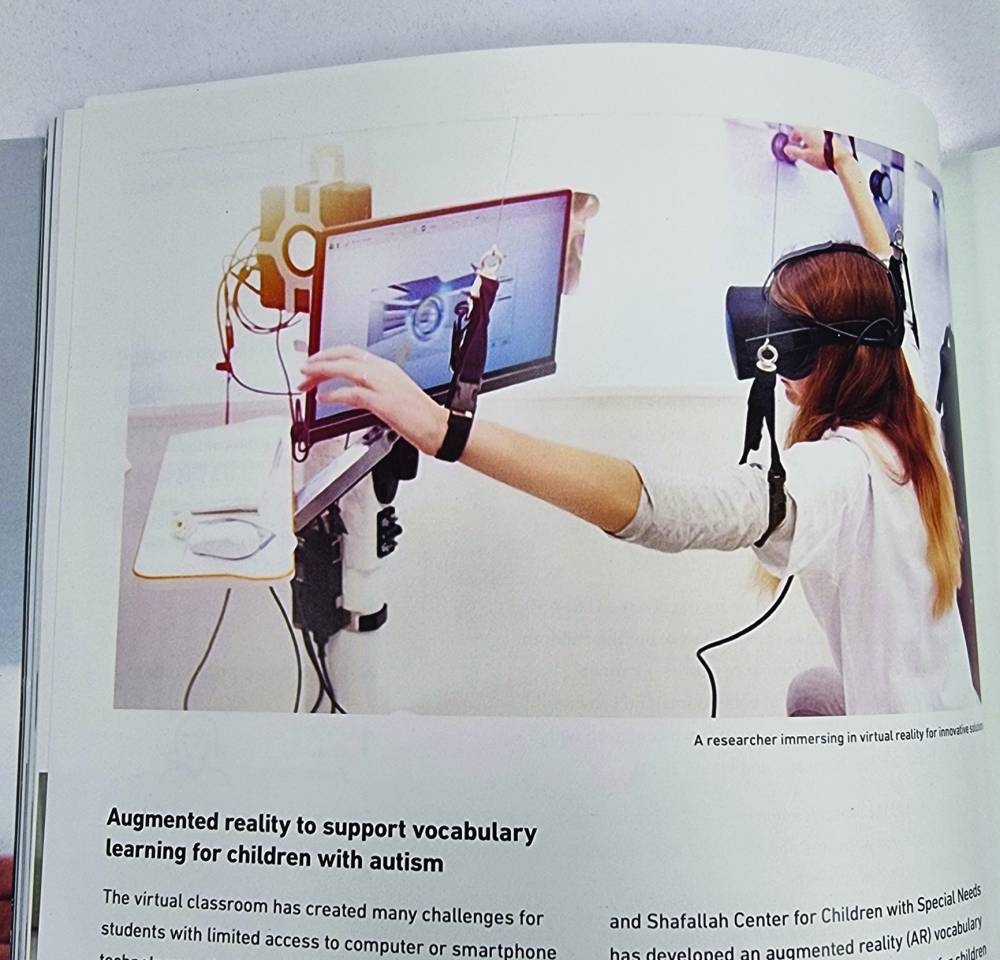Qatar Foundation (QF) researchers discovered that personalised artificial intelligence (AI) models using eye-tracking are more effective than generalised approaches in understanding and supporting the unique attentional behaviours of children with Autistic Spectrum Disorders (ASD).
This key finding, detailed in QF’s ‘Building an Autism-Friendly Nation in Qatar’ progress report (2016-2024), underlines a critical need for tailored educational methods.
The drive for this groundbreaking work stemmed from challenges faced by teachers at QF’s Renad Academy, who struggled to assess whether their students with autism were truly engaged or learning in class.
Responding to this need, a multidisciplinary team of QF researchers, led by Hamad Bin Khalifa University (HBKU) - College of Science and Engineering (CSE), embarked on a series of insightful studies beginning in 2017.
With support from HBKU, the Qatar National Research Fund, and the Mada Assistive Technology Centre, the report noted that the researchers initiated comprehensive studies into the attentional behaviour and social interaction of children with ASD. A basis of this success was the deep trust QF had cultivated within the autism communities, enabling the researchers to secure consent for children to participate.
According to the report, a significant area of focus was assessing attention and engagement during learning.
Children on the autism spectrum often face difficulties maintaining attention, which can sometimes lead to their placement in less distracting environments, potentially limiting social interactions.
The initial study used eye-tracking measures alongside performance scores to investigate the effects of different classroom distractions on children with ASD.
Surprisingly, the report said the results showed that the gaze behaviours of children with ASD were similar to those of typically developing children. However, children with ASD exhibited significantly lower performance scores, highlighting a gap between outward appearance of attention and actual learning outcomes.
These findings, published in 2021 by Banire, Al Thani, Qarage, Mansoor, and Makki, are set to inform the design of more supportive classrooms and provide crucial knowledge on the attentional support required by children with ASD.
Building on this, the research team later incorporated advanced AI techniques, including machine learning and deep learning, with simple tools such as webcams and eye-tracking devices to delve deeper into how children focus their attention.
The discovery, detailed in a 2024 publication by Banire et al, was that eye-tracking proved exceptionally effective in detecting attention in children with autism. Personalised eye-tracking models consistently outperformed generalised ones for children with ASD. For typically developing children, a generalised AI approach was more effective.
“These findings highlight that children with autism focus their attention in unique ways, underscoring the importance of developing personalised learning methods rather than relying on one-size-fits-all solutions,” the report states.
The study’s objectives were to identify how children with autism react to external stimuli and distractions in real classroom settings, and to compare their attentional behaviour with that of typically developing children, utilising approaches such as facial expression analysis, eye movement tracking, and a combination of both.
QF researchers have also innovated practical learning tools. Recognising the challenges of virtual learning for students with developmental disabilities – particularly limited access to technology and interactive platforms – the team developed an augmented reality (AR) vocabulary learning application.
The report said future plans for the AR platform include expanding it to cover a full learning ecosystem, where children and their parents can engage with an online teacher. In the absence of a teacher, a “talkative robotic avatar” will provide support in the virtual environment.

‘Building an Autism-Friendly Nation in Qatar’ progress report (2016-2024).

